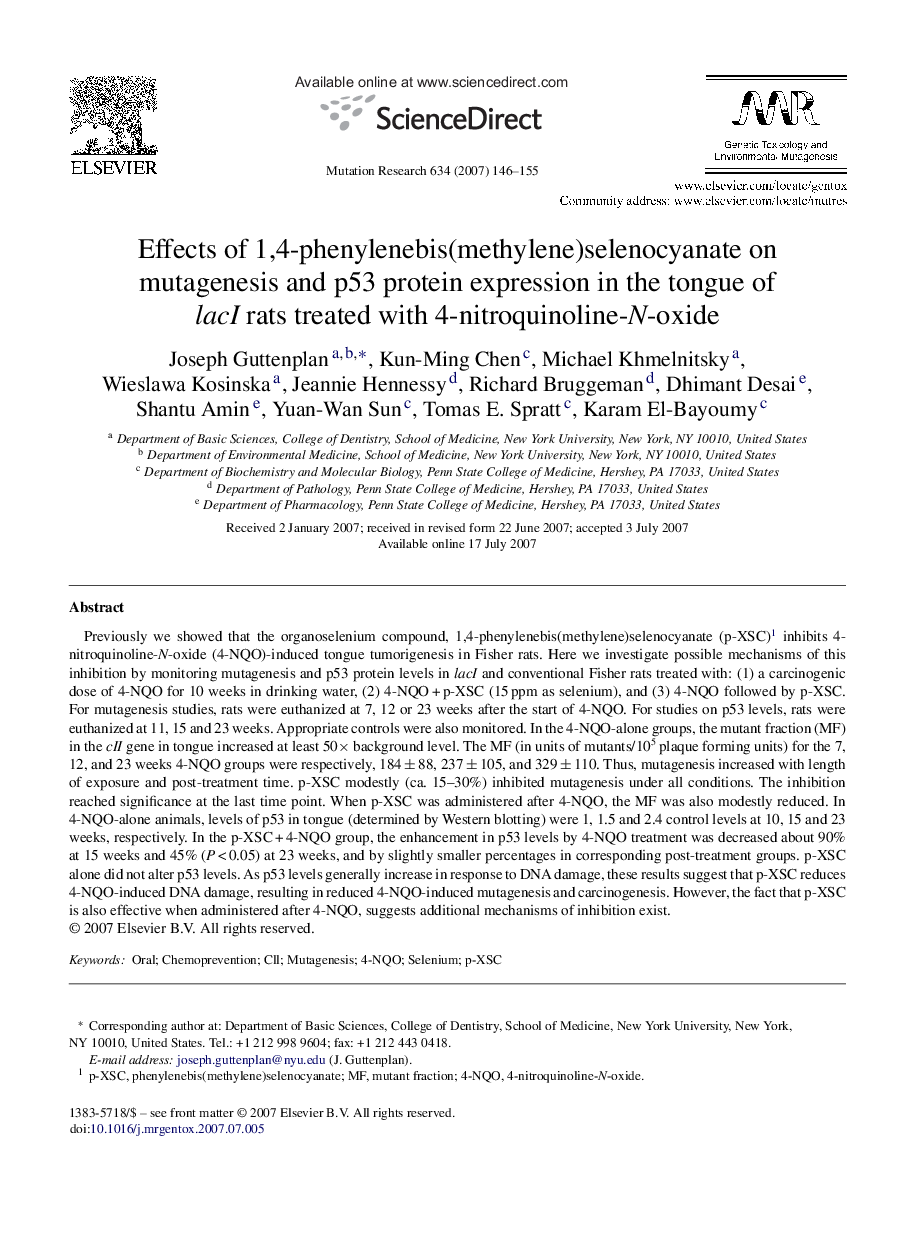| کد مقاله | کد نشریه | سال انتشار | مقاله انگلیسی | نسخه تمام متن |
|---|---|---|---|---|
| 2149057 | 1548638 | 2007 | 10 صفحه PDF | دانلود رایگان |

Previously we showed that the organoselenium compound, 1,4-phenylenebis(methylene)selenocyanate (p-XSC)1 inhibits 4-nitroquinoline-N-oxide (4-NQO)-induced tongue tumorigenesis in Fisher rats. Here we investigate possible mechanisms of this inhibition by monitoring mutagenesis and p53 protein levels in lacI and conventional Fisher rats treated with: (1) a carcinogenic dose of 4-NQO for 10 weeks in drinking water, (2) 4-NQO + p-XSC (15 ppm as selenium), and (3) 4-NQO followed by p-XSC. For mutagenesis studies, rats were euthanized at 7, 12 or 23 weeks after the start of 4-NQO. For studies on p53 levels, rats were euthanized at 11, 15 and 23 weeks. Appropriate controls were also monitored. In the 4-NQO-alone groups, the mutant fraction (MF) in the cII gene in tongue increased at least 50× background level. The MF (in units of mutants/105 plaque forming units) for the 7, 12, and 23 weeks 4-NQO groups were respectively, 184 ± 88, 237 ± 105, and 329 ± 110. Thus, mutagenesis increased with length of exposure and post-treatment time. p-XSC modestly (ca. 15–30%) inhibited mutagenesis under all conditions. The inhibition reached significance at the last time point. When p-XSC was administered after 4-NQO, the MF was also modestly reduced. In 4-NQO-alone animals, levels of p53 in tongue (determined by Western blotting) were 1, 1.5 and 2.4 control levels at 10, 15 and 23 weeks, respectively. In the p-XSC + 4-NQO group, the enhancement in p53 levels by 4-NQO treatment was decreased about 90% at 15 weeks and 45% (P < 0.05) at 23 weeks, and by slightly smaller percentages in corresponding post-treatment groups. p-XSC alone did not alter p53 levels. As p53 levels generally increase in response to DNA damage, these results suggest that p-XSC reduces 4-NQO-induced DNA damage, resulting in reduced 4-NQO-induced mutagenesis and carcinogenesis. However, the fact that p-XSC is also effective when administered after 4-NQO, suggests additional mechanisms of inhibition exist.
Journal: Mutation Research/Genetic Toxicology and Environmental Mutagenesis - Volume 634, Issues 1–2, 1 December 2007, Pages 146–155